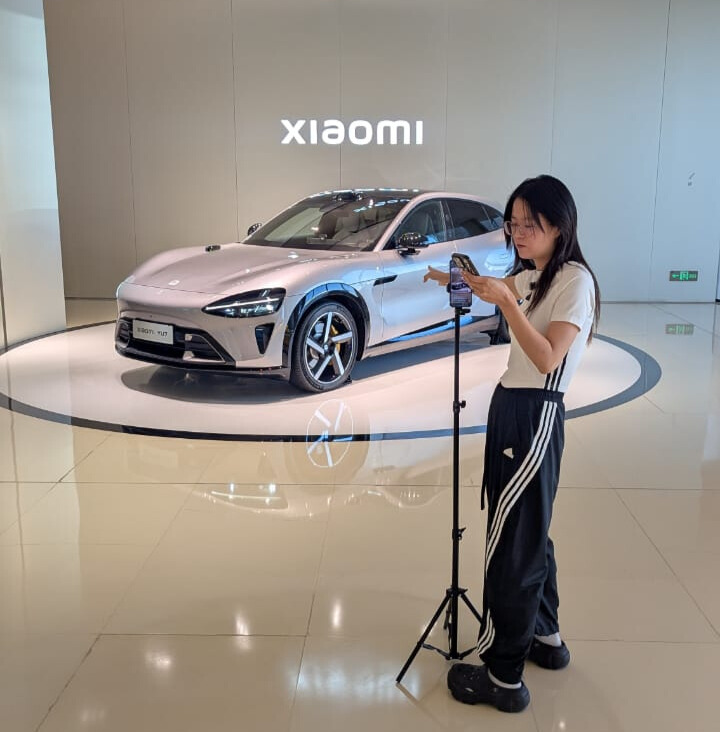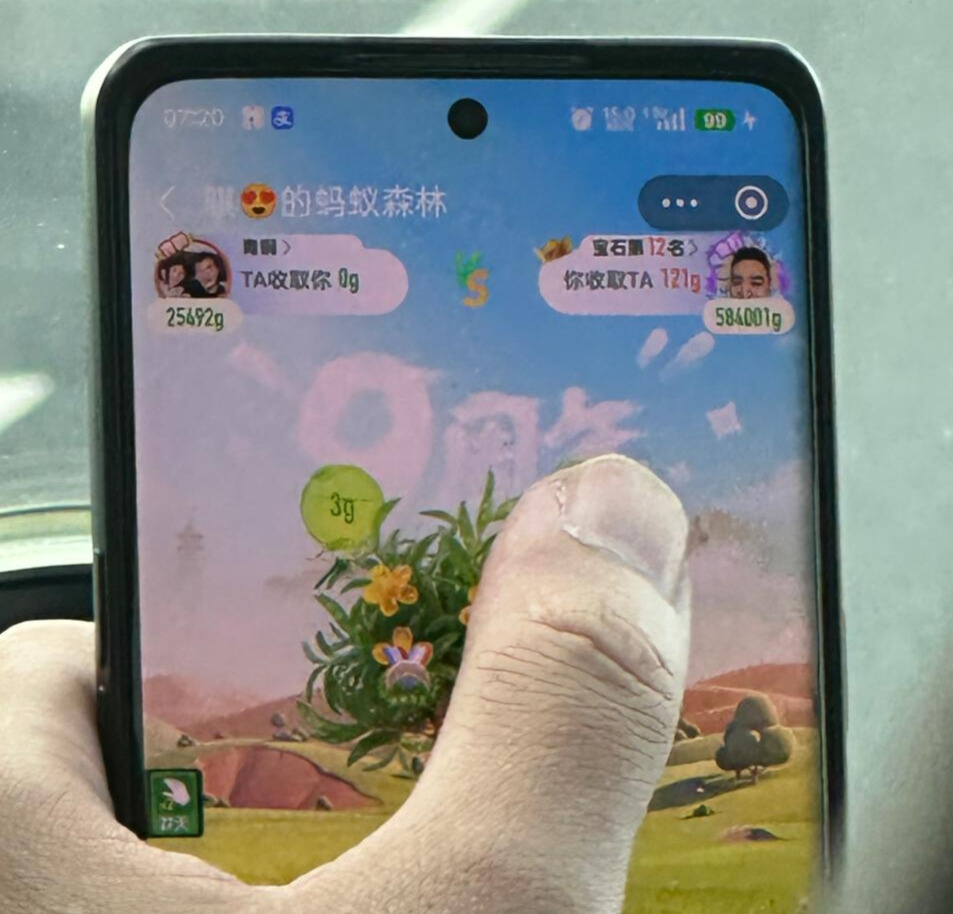China’s Internet ecosystem isn’t just mature — it’s a different species.
When people say China is the future, it sounds like something you’d read on a neon billboard in Shenzhen. But after spending a week in China last month, I realised they’re not talking about just technology. They’re talking about the cultural tempo: the collective rhythm of a country that has already built its version of the future, and quietly moved in.
On the technological front, the fact is they are comfortably ahead in manufacturing, EV, nuclear and robotics. Anyone interested in ‘how’ or ‘why’ should pick up a copy of “Breakneck” by Dan Wang (highly recommend this!).
In this article, I’ll spend time on the cultural tempo and how Chinese culture, state, and software fuse into a unique and symbiotic consumer internet landscape. One that led to super-apps, live-commerce and a staggering 600M trees planted in the desert.
We’ll cover this across 4 sections:
- An Empire of Performers (Influencers, Livestreaming and Commerce)
- An Empire of Participants (why everyone creates)
- An Empire of Play (gamification and engagement)
- An Empire of Platforms (the Great Firewall and Superapps)
An Empire of Performers
Unmet demand + regulatory blind spot = explosive growth.
Arguably, Livestreaming and Influencer Commerce were always going to be invented/perfected in China. Regulation had created a whitespace in media/entertainment, which Technology exploited
TV and Movies are state-regulated - leading to content that is less entertaining
- The Central regulator (NRTA) directly approves, censors, and schedules TV shows & films
- Content restrictions: Rules prohibit depictions of politically sensitive topics (e.g., Tiananmen, Tibet, Xinjiang), supernatural themes (ghosts, reincarnation), violence/sex, and anything undermining Party authority or ‘social harmony.’
- Content Imports are limited: Quota of ~34 foreign films, post-heavy editing
- In 2021, regulators banned “effeminate men” from TV, restricted idol competition shows, and capped celebrity pay & enforced taxes
Tech platforms exploited the gap in entertainment
- In the 2000s–2010s, online platforms like Youku, Tudou, iQiyi, Tencent Video launched with looser oversight. Short video apps (Douyin, Kuaishou) and livestreaming (YY, Taobao Live) came later, with even more freedom.
- Platforms flooded the space with content traditional media could never air — quirky, sexualized, subcultural, grassroots, experimental.
- Because regulators focused on broadcast TV/film, the internet enjoyed a gray zone of lighter scrutiny for a decade-plus.
These tech platforms needed a ton of content-liquidity and fast. UGC (User Generated Content), imo, was cheap and quickly filled the gap with engaging content - Youtube had shown the way but China completed the arc (knowingly or unknowingly).
Performers/Influencers started becoming as big as the platforms. For a country seeing both exploding GDP/capita and a sandboxed internet, Influencers not just entertained, but also showed audiences “a better life”, enjoying utmost trust. This is also why in India and the US (where entertainment is mature) celebrities and influencers have way less ‘trust’ (barring certain South Indian superstars of the past).
This ‘trust’ allowed for engagement, advertisement AND commerce. The last part was unique - and single handedly worth hundreds of billions of dollars (there is scale… and then there is China/US scale).
You can’t walk ten steps without seeing a tripod supporting livestreaming. What do they sell you ask? Everything - literally everything. Why sell just lipsticks when you can sell cars? (see photo below clicked at Xiaomi EV car factory). Everyone is glued in sometimes with multiple phones (one for content and one for messaging friends live). The alternative was state-approved TV programs. Livestreaming isn’t the appetizer; it’s a whole meal.

But how was China able to produce so many performers so quickly? And why was the audience comfortable with the low quality production of UGC? Let's explore this next.
An Empire of Participants
In China, everyone is a performer. It’s not confidence, it’s culture.
On our second evening in Beijing, we walked into what looked like a family restaurant and found ourselves in the middle of a concert. Parents, toddlers, and grandparents were wildly waving neon sticks at a four-member pop band singing from a small stage. Each table had balloons and party hats. The band wasn’t famous. They were just local. When we asked if this was common, the waiter laughed: “It’s Tuesday.” By the way, you can’t escape bands singing karaoke style from a propped-up stage during dinner in China - we tried.

China’s collective instinct to participate shows up everywhere. Our 25-year-old translator proudly showed her Douyin (Tiktok) page showing amateur dance clips recorded in her modest living room - she had ~400 followers. “Everyone has one,” she shrugged. We checked with the next two translators - both of them did as well; and so did everyone else we asked. No one was shy/coy about it - in fact they were delighted to show us their (sometimes embarrassing) videos.
Why? In China it is rude not to participate. The quality of your performance will do less to set you apart than choosing to “stay out”. According to Confucian principles: a person is never just an isolated individual, but always part of a network of relationships — family, community, state. (Note: Xi era quotes Confucius frequently in speeches; state media promotes Confucian sayings.)
- Collective participation is normalised; Group karaoke, morning exercises, company outings, and even mandatory school performances make “public trying” routine
- Low embarrassment threshold: “Everyone takes a turn” - skill is less important than participation. Not participating can be seen as aloof.
- Pragmatic, not perfectionist: You don’t have to be great, just willing. Chinese culture tolerates “good enough” performance — showing effort matters
This contrasts with other geographies!
Korea: More polished, fear of judgment, higher quality of entertainment
Japan: High social restraint - avoid disturbing others, maintaining ‘face’, avoiding embarrassment
India: Fear of gossip, reputation loss, or being mocked by family/community; broadcasting oneself online feels exposing
US: Individualism + very polished alternatives
This also allows tech platforms to maximise engagement and retention through intense Gamification - something even the Government has used to greenify the desert. We cover that next.
An Empire of Play
If performance is culture, gamification is not just engagement; it is commerce
Every time we stopped at the traffic light our cabbie took out his second phone and carefully tended to his forest/garden on an app.
“Why do you do it?” I asked. “I’m planting a forest” he replied. “Once my tree becomes big, Alipay will plant a real tree for me”. “So cute…”, I thought - until I googled the statistics.
More than 600M real trees have been planted in the desert because of this feature!
Ant Forest is a mini-program within Alipay co-built with the Govt. It encourages users to carry out “low-carbon” / eco-friendly actions in daily life (walking, taking public transport, paying online, reducing plastic) and rewards them with green energy points. Points contribute to growing a virtual tree in the user’s Ant Forest. Once the virtual tree “matures”, a real tree is planted. 600M+ users, 600M+ trees with lat-longs specified.

This got us curious as to what else is gamified - and we quickly realised that China had gamification-led-engagement down to a science.
- Pinduoduo (nearly 750M active users) lets people “plant” virtual fruit trees through app actions, then sends the real fruit home.
- Meituan’s “Plant Vegetables” mini-game, tied to its 670M users, rewards repeat orders with coupon “harvests.”
- JD.com’s Joy Dog feature turns shopping into pet-care simulation — feed your dog, get discounts.
- And on WeRun, a fitness mini-app inside WeChat with over 100M DAUs, your step count ranks you against friends, gamifying movement.
There have been a few half-hearted tries in India on gamification-led-engagement. In India, loyalty programs reward consumption. In China, they reward consistency. I think more apps in India should think harder on “consistency”.
In case we fail, it’ll be another bullet-point under the ever growing list of “Impact of the Great Firewall of China” which we cover in the next section - and get closer to Superapps.
An Empire of Platforms
The Great Firewall of China - a sandbox of 1.1B people
Not everything is “cultural nuance” - you can’t separate a nation’s policies from its people (sometimes literally like the mandated One Child Policy). China’s internet is unique, because it was allowed, even compelled, to be.
- Sandboxing created a parallel universeFrom the 2000s onward, China blocked or heavily restricted Western platforms (Google 2010, Facebook 2009, YouTube 2009, Twitter 2009).
- Copy => Localise => Leapfrog
- Early platforms often started as clones of Western apps (Youku ~ YouTube, Weibo ~ Twitter, Renren ~ Facebook).
- Over time, they didn’t just copy - they leapfrogged: Douyin’s algorithm, PDD’s social commerce, Ant Forest gamification - ahead of the West.
- Tight coupling of platform and state
- Because foreign competitors were excluded, domestic players scaled to hundreds of millions of users without competition.
- In exchange, they had to align with state priorities: censorship, data sharing, ideological campaigns.
- Platforms are deeply integrated with governance (e.g., Douyin pushing educational/propaganda, WeChat as a quasi-government service portal).
- Super app evolution
- Unlike the West, where apps stayed siloed (Twitter = social, Amazon = shopping, PayPal = payments), China’s sandbox fostered super-apps
- With no global platforms to choose from, Chinese consumers all funneled into the same domestic apps, creating huge captive user bases.
- Sandbox + scale = a handful of national champions that blended functions, gamified engagement, and aligned with the state.
This means - every app (kind of?) does everything.
WeChat is like WhatsApp… but it’s also like PhonePe… but it’s also like Shopify… but it’s also like the app store… but it’s also like TikTok. Whew. (I'm sure I missed a few features).
Douyin (TikTok) is reels/shorts + microdrama + YouTube + commerce (both sync and async). Bytedance (Douyin’s parent company) is one of the most fascinating media empires nobody is talking about. Its apps have an unreal market share among “top downloaded apps” in China - winning across categories like short video, microdrama, audio, reading/novels, OTT and also owns China’s Open AI - Doubau.
I’m only scratching the surface of superapp behaviour - as a quick deepseek prompt will prove. What’s equally interesting is the new wave towards verticalization of markets - where younger folks are choosing to ignore “old people apps” in favour of their favourites (read about on Xiaohongshu vs Douyin). Tech cycles rhyme even if they don’t repeat.
Same needs, different internet.
Each Chinese platform began with the same user problem as its Indian counterpart, but evolved differently.
Where India built vertical apps, China built interconnected ecosystems.
Closing Note
On my last day in Shenzen, I watched a group of teenagers filming a Douyin dance under a flickering streetlight. A delivery rider glided past, streaming live to hundreds of followers, narrating his route. After a few days, it stopped feeling futuristic. It felt normal - for China and its context.
It’s a bit like the flora and fauna of Australia — born from the same evolutionary roots yet shaped by isolation into strange and beautiful forms. Kangaroos, platypuses, and baobab-like bottle trees look both familiar AND strange. So too with China’s web: it mirrors the global Internet in outline, but its inner life — its species of apps, habits, and social ecosystems — evolved under different, and distinctly red, skies.
What does this mean for Indian founders?
- Get ‘inspired’ but don’t copy blindly
- Don’t just look to the west for ideas and form factors - your neighbour does a better job at many things.
- Don’t let “language” get in the way - jump on a flight to China (and use AI to communicate)
- Most importantly - India T1 may behave like the west, but “Bharat” needs solutions that are first principles; And this is mostly untapped!
The bull case is for our consumer landscape to evolve differently - under bluer skies.
Happy building!





.jpg)



.jpg)
.jpg)
%20(1).png)
.svg)


